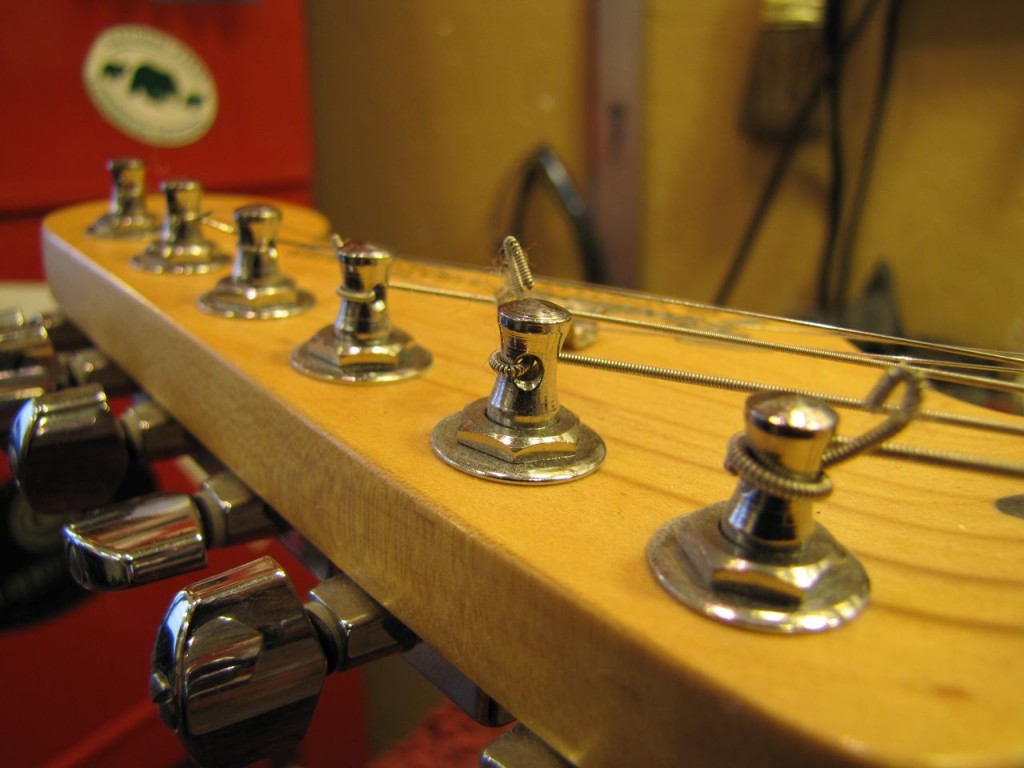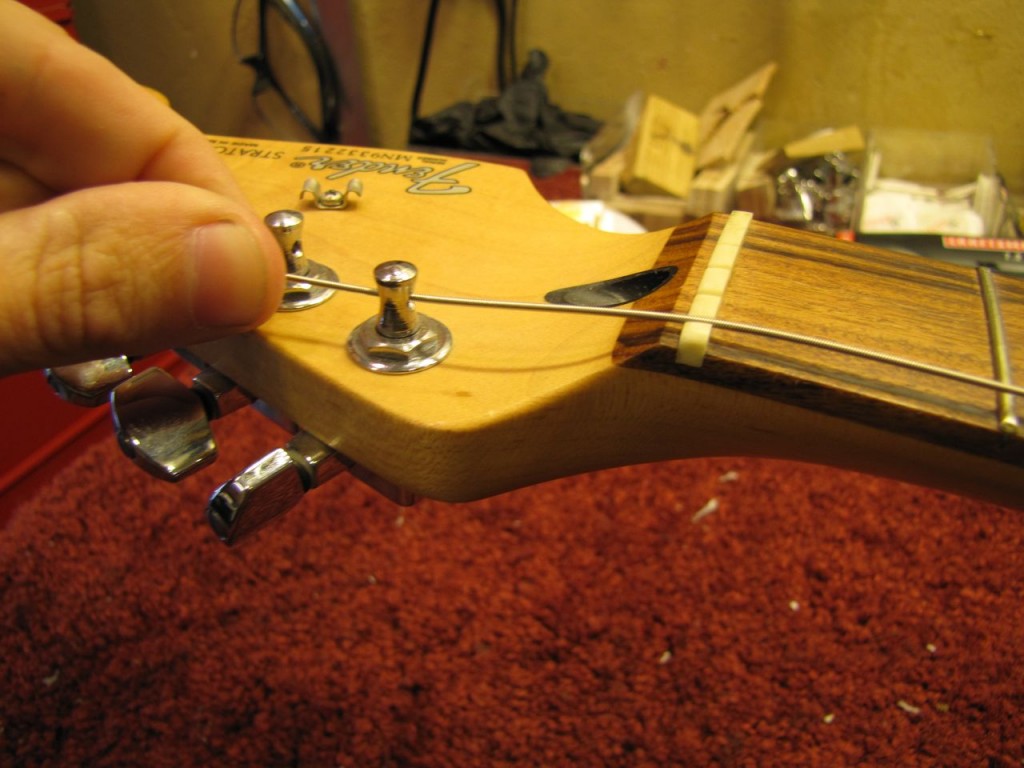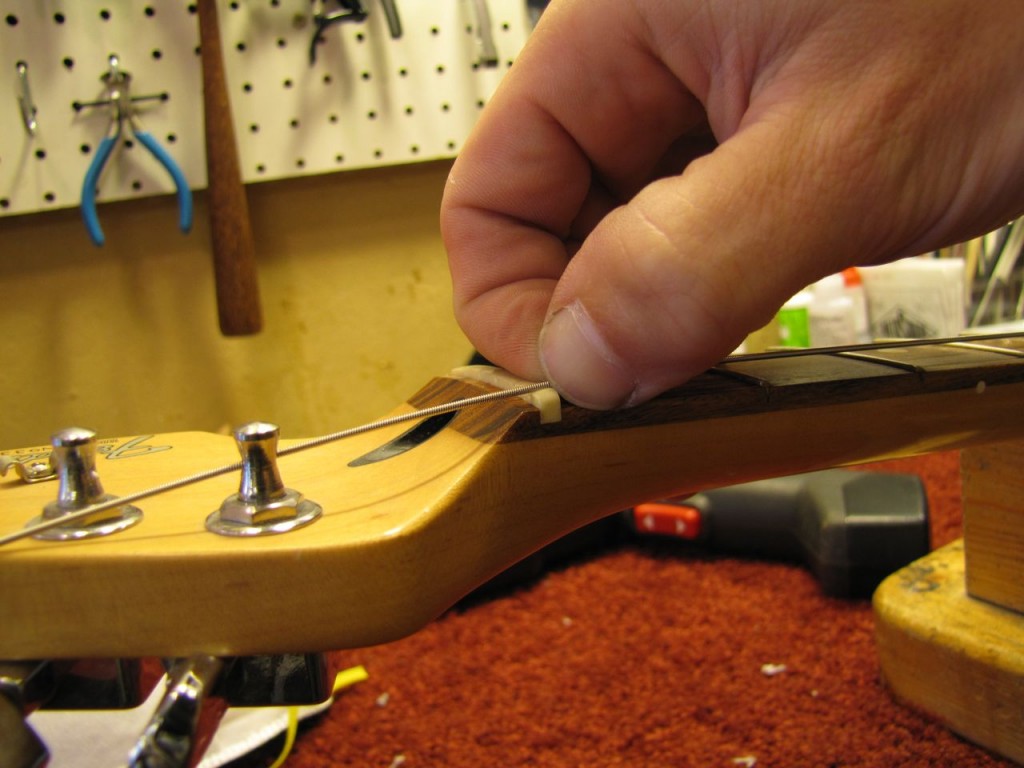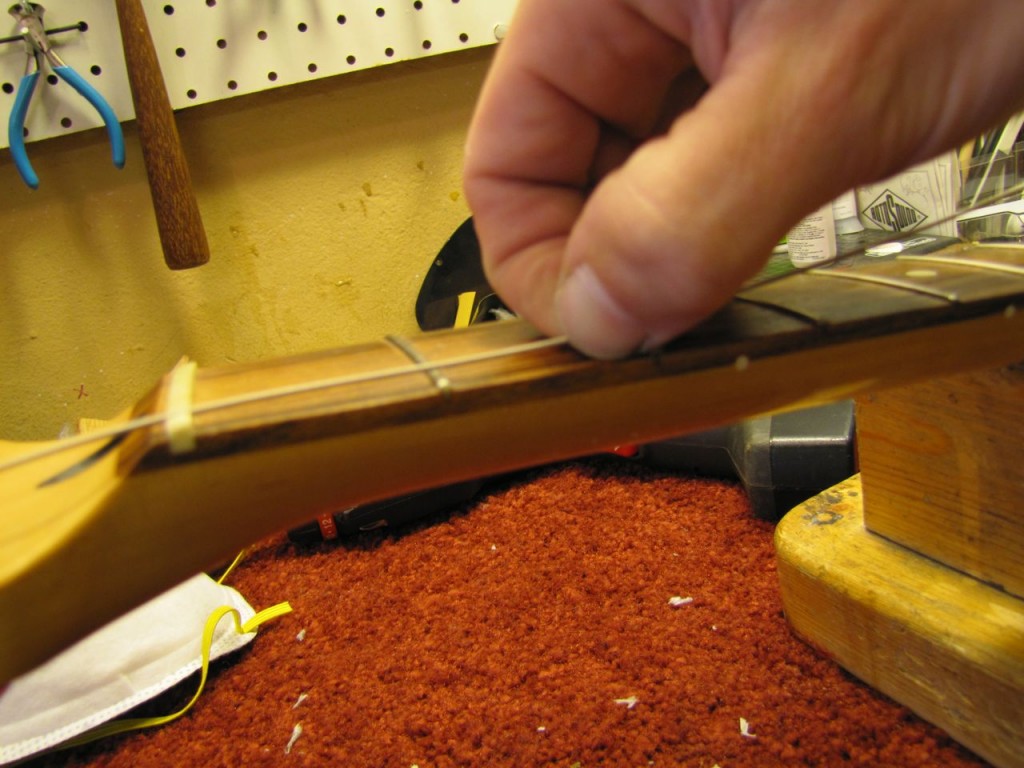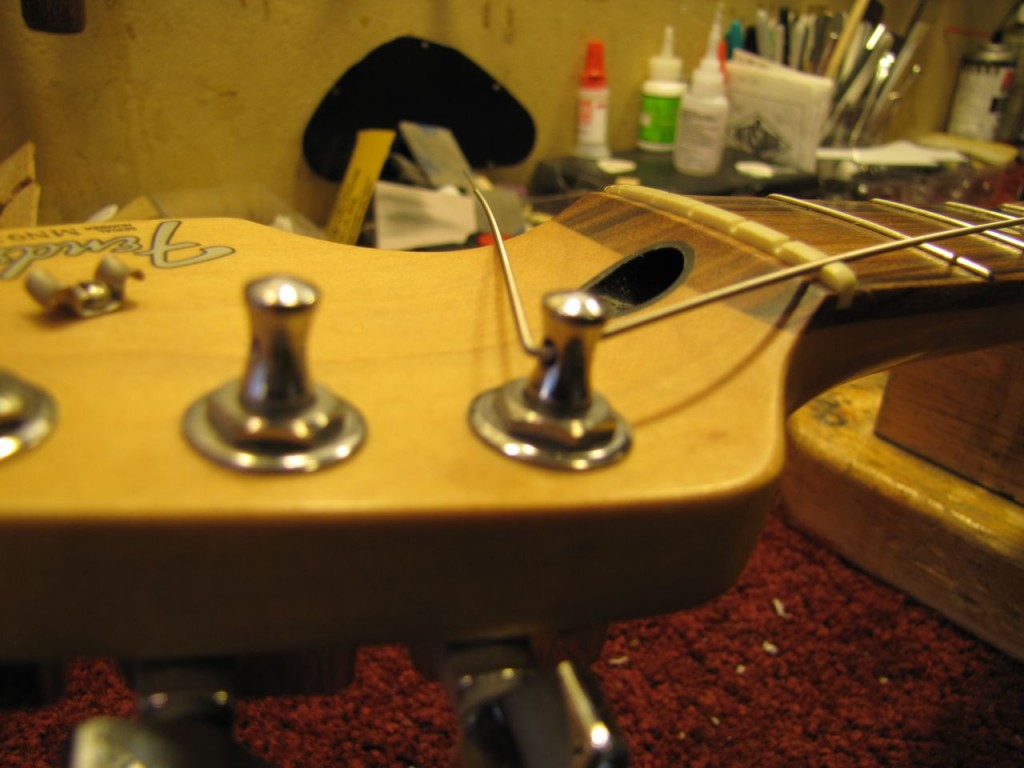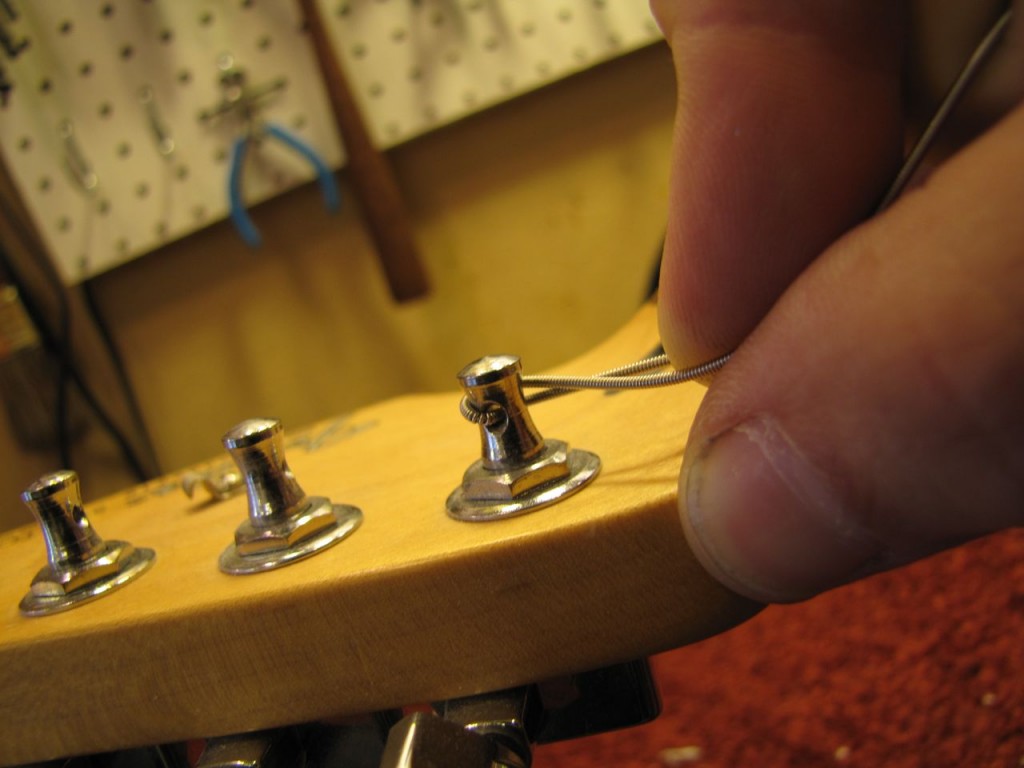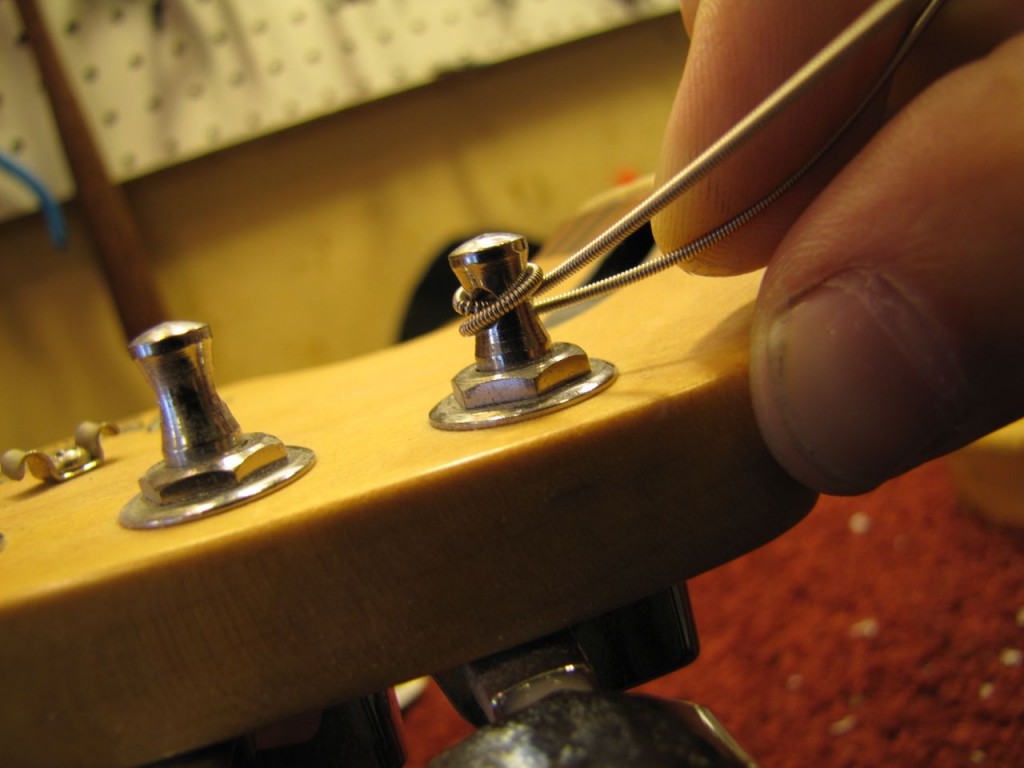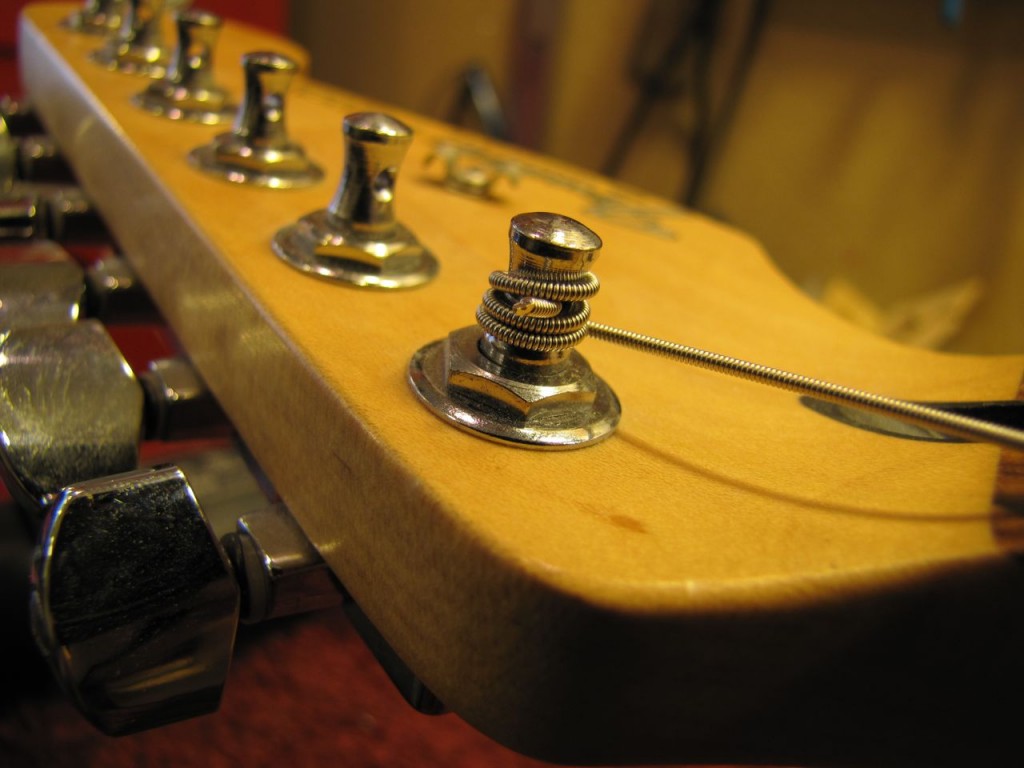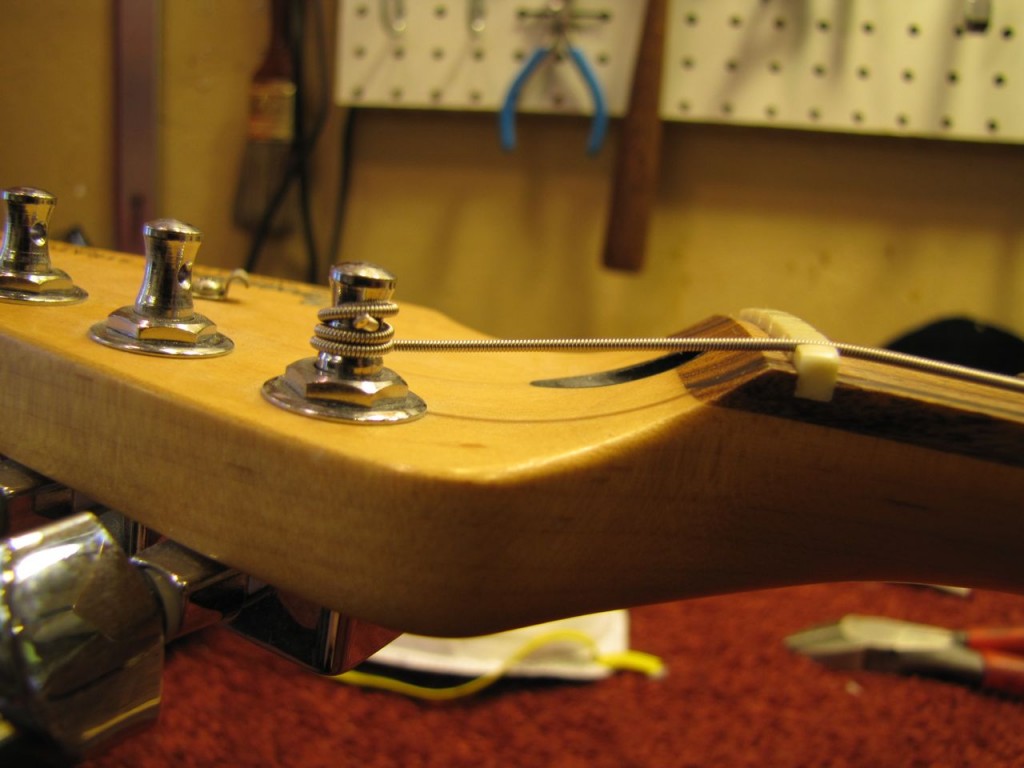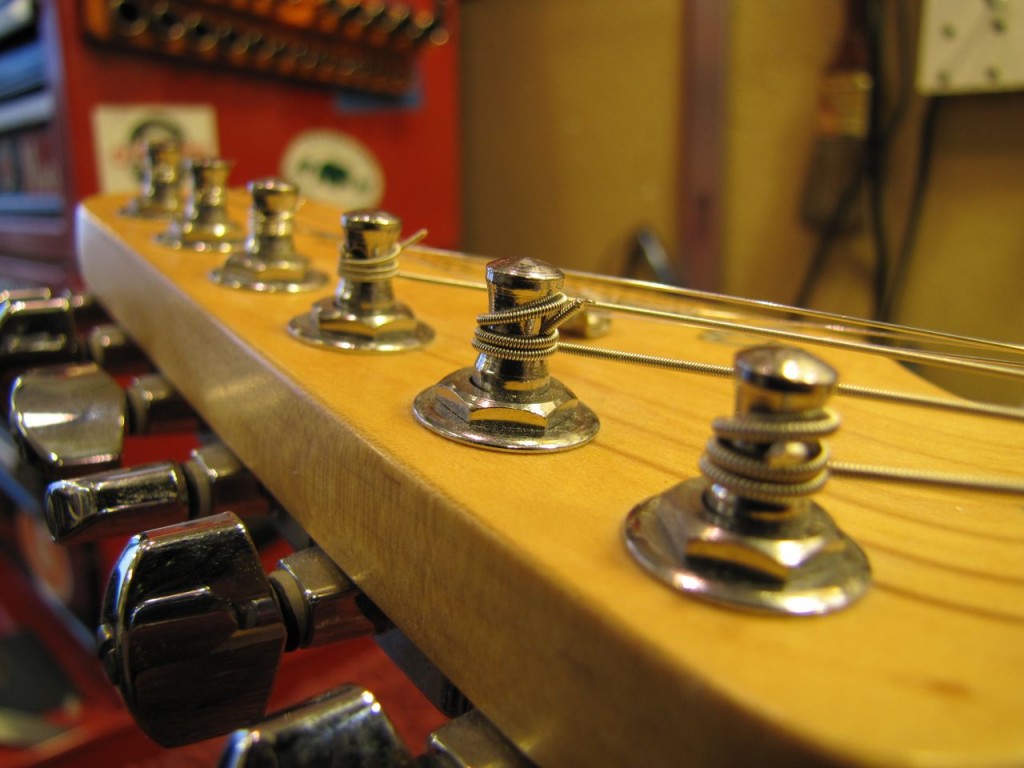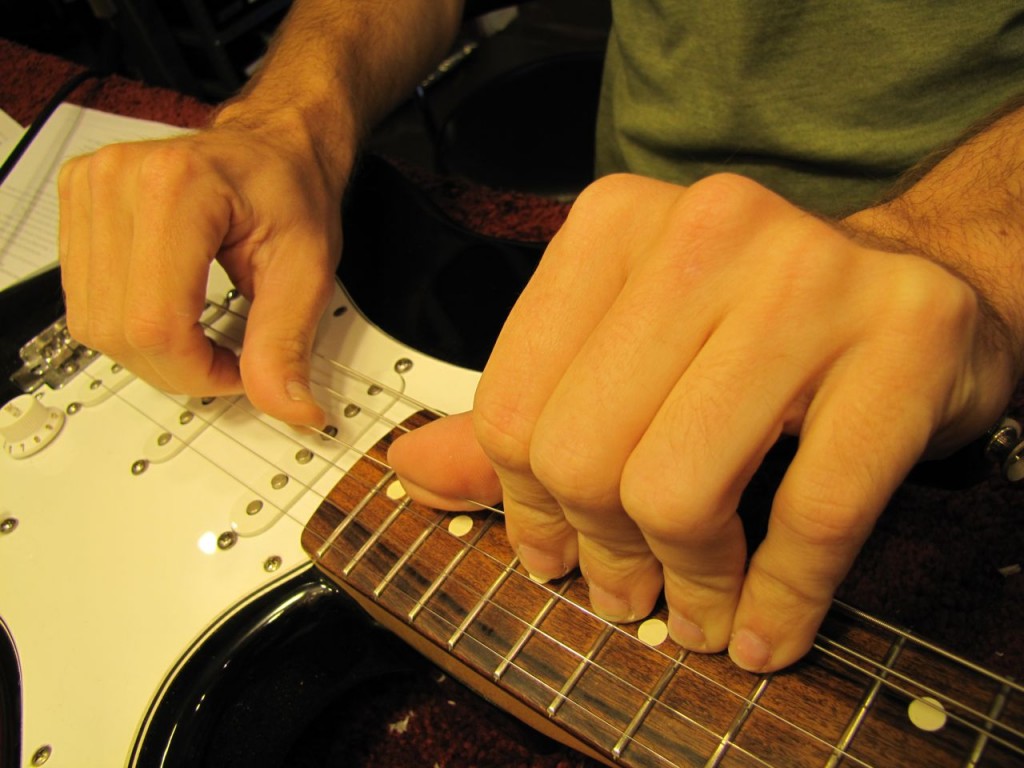One of the most common mistakes we see in the shop is strings installed incorrectly. Too many or not enough winds around the tuning post, mangled strings, or worse: tying the strings in knots. If your strings aren’t wound around the tuning posts properly, it can be difficult to keep the guitar in tune, or difficult to take the strings off when it’s time to change them. We had a guitar come in today with some of these problems, so we thought we’d take a moment to talk about how to properly change your strings.
This guitar came in without enough winds around the posts. There wasn’t even a full wind around the tuning post, so most of the stress on the string was right at the post hole. When the strain is against the post hole, the string has a tendency to stretch and break at that point, because it’s resting on a sharp angle rather than the round of the post. Some of the plain strings had been run through the hole twice, which doesn’t help the guitar stay in tune, but does make it very difficult to remove the string later.
When you’re changing your strings, you should have around 2-3 winds around the post (around 2 inches of slack) for optimal tuning stability. An easy way to gauge how much slack you need is by measuring against your first two frets. First, pull the string taught through the tuning post hole:
Then grab the string at the nut:
And pull it back around two frets. Viola! The perfect amount of slack!
Now kink the string at the post, so that the string doesn’t pull through the hole when it’s being tuned up.
Start tuning the string to pitch, but pay close attention to how the string winds around the post. The first wind goes OVER the hole, and then all successive winds go UNDER the hole and the previous winds. This will help hold the string in place without having to tie any knots. Make sense?
First wind, OVER the hole (click the pic for a close up):
Second wind, UNDER the first (click for a close up):
When the string is tuned up to pitch, snip off the excess string – you could poke an eye out if you don’t! Your finished string winds should look like this:
The reason strings should be wound this way is two fold: the strings are stable around the post, and the string ends up coming off the post towards the bottom, which helps create greater angle as the string passes over the nut:
Here’s what your completed re-string should look like:
All finished, right? Not quite! Strings stretch, and can take a LONG time to settle in. A way to speed this process up is to stretch the string manually. Hold the string in both hands, press your thumbs against the string, and work it back and forth, up and down the string, gently stretching the string. ALWAYS stretch the string between your hands, NOT against the guitar! This will help the guitar stay in tune even with brand new strings.
That’s it! We’re done! Still got questions? Give us a call at the shop, or just drop by with your guitar. We’ll be happy to show you how it’s done.



